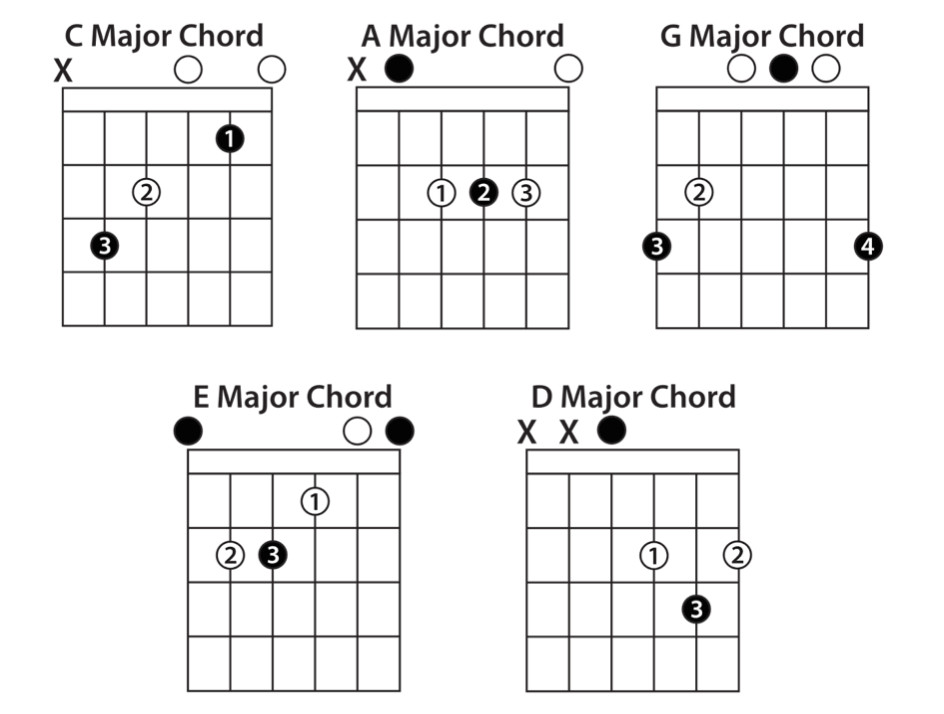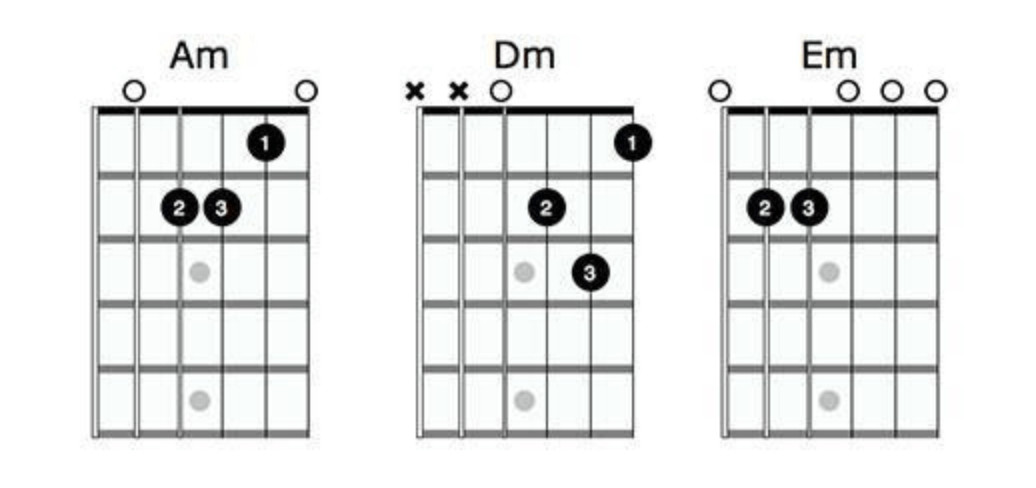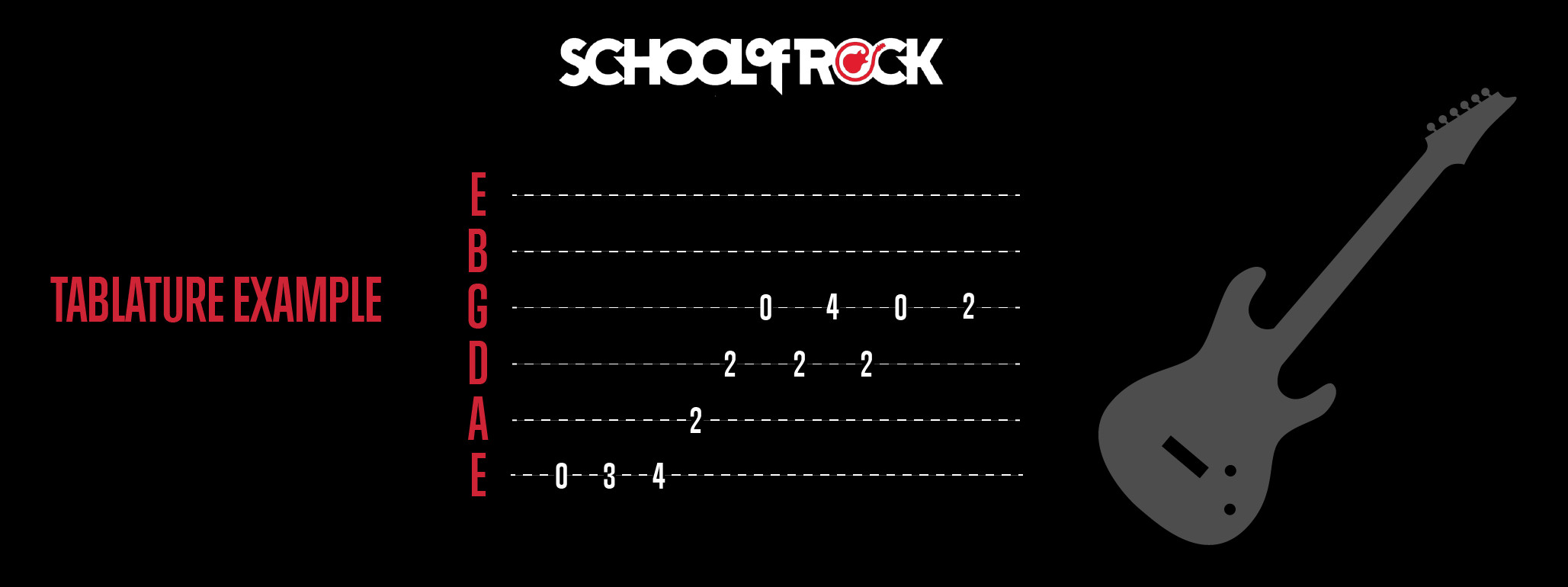Picking up a guitar for the first time is exciting. Your fingers are itching to play, and you’re probably wondering, “What do I actually do with this thing?”. One of the very first and most crucial things beginner guitarists learn is chords. But what exactly are chords? Think of chords as the building blocks of harmony in music. They provide richness and depth, creating a full and complete sound. Without chords, music would feel rhythmically empty and less engaging. Most instruments, except for percussion like drums and bass (which focus on rhythm and harmonic foundation), rely on chords to create melodies and songs we love.
Let’s dive into the world of basic guitar chords perfect for beginners. We’ll explore different types, learn tips and tricks to play them cleanly, and even look at some popular songs you can start playing right away.
The School of Rock method emphasizes hands-on learning and performance. Students quickly apply what they learn in lessons to real musical scenarios, often performing live on stage. Within guitar playing, students typically focus on either lead or rhythm guitar. Lead guitarists are your melody makers, crafting riffs and solos, while rhythm guitarists are the chord masters, using strumming and fingerpicking techniques to provide the harmonic backbone. Regardless of which path you choose, understanding and playing chords is absolutely essential for any guitarist. If you’re just starting your guitar journey or considering an upgrade, our guitar buying guide offers helpful advice on choosing the right instrument.
Understanding Basic Guitar Chords
Learning chords can feel a bit challenging initially. There are different types of chords and various ways to form them on the fretboard. However, breaking it down into categories makes it much easier to grasp. We’ll focus on three fundamental types that are crucial for beginners:
Power Chords
Power chords are often among the first chords taught at School of Rock, and for good reason. They are incredibly versatile and widely used across genres like rock, metal, pop, and even some modern classical music. Power chords are known for being beginner-friendly because they typically involve only two or three strings and fewer frets. This simpler finger positioning makes them physically easier to play. While power chords can be played on any guitar type, they are most commonly associated with electric guitars. When played on an electric guitar, power chords can be easily distorted, adding a powerful, driving edge to the music. Distortion can be applied to other chord types too, but it particularly complements the raw energy of power chords, shaping the overall mood and feel of a song.
Open Chords
Open chords are another excellent starting point for guitarists. The term “open” refers to the fact that some strings are played “open,” meaning they vibrate freely without being fretted by your left hand. Similar to power chords, open chords often utilize fewer frets and fingers compared to more complex chords, making them easier to manage for beginners. However, a key difference is that open chords typically involve all six strings of the guitar, creating a fuller, richer sound. Your fretting hand won’t be needed on every string, simplifying the fingerings. A common set of open chords that are foundational for many songs are often referred to by the acronym CAGED. We’ll explore these specific chords and how to play them shortly.
Barre Chords
Barre chords represent a step up in difficulty from power and open chords, but they are incredibly valuable as you progress. The beauty of barre chords lies in their portability. Once you learn a barre chord shape, you can move that entire shape up and down the guitar neck to create a variety of different chords. This makes transitioning between chords potentially faster because you maintain the same hand shape, only shifting its position along the fretboard. However, barre chords are typically considered more challenging for beginners because they often require one finger (sometimes two) to press down multiple strings at the same fret simultaneously – the “barre” technique. While we won’t delve deeply into barre chords in this beginner-focused article, understanding their existence and potential is important for your guitar journey. We’ll save a detailed exploration of barre chords for a later time.
Mastering Open Guitar Chords
Before we jump into specific open chords, it’s crucial to ensure your guitar is properly tuned. Playing in tune is fundamental for a pleasing sound and for developing your ear. If you’re struggling with tuning, this helpful article provides practical tips: Beginner’s Guide to Tuning a Guitar. A well-tuned guitar is the foundation for learning chords effectively.
 Diagram of common open guitar chords for beginners. Includes chords for A major, C major, D major, E major, G major, E minor, and D minor.
Diagram of common open guitar chords for beginners. Includes chords for A major, C major, D major, E major, G major, E minor, and D minor.
Now, let’s explore open chords, particularly the CAGED system, which is a cornerstone of the School of Rock’s performance-based method. CAGED chords are emphasized because they are incredibly common in a vast range of popular songs that students learn and perform. Each letter in CAGED represents a major chord shape – C, A, G, E, and D. Below, you’ll find these chords presented in chord diagrams.
Understanding Chord Diagrams: Finger Placement
A chord diagram is your visual guide to playing a chord. It shows you which strings to play, which frets to press down, and which fingers to use. Think of the diagram as representing your guitar neck standing upright in front of you. The diagram is read horizontally. The top line represents the thickest string, the low E string (6th string), and the bottom line represents the thinnest string, the high E string (1st string).
- “x”: An “x” above a string indicates a muted string. This string should not be played in the chord.
- “o” (or circle): An “o” above a string signifies an open string. Play this string without pressing down any frets.
- Numbers on the frets: Numbers within the diagram indicate which finger to use to fret a string: 1 = index finger, 2 = middle finger, 3 = ring finger, and 4 = pinky finger. The position of the numbers vertically within the diagram shows you the fret. The topmost row of the diagram represents the first fret, the next row the second fret, and so on.
For example, looking at the A Major chord diagram, you’ll see that all the fretted notes are on the second fret. The diagram shows you to place your index finger on the second fret of the D string, your middle finger on the second fret of the G string (below the D string in the diagram), and your ring finger on the second fret of the B string (below the G string).
 Diagram of CAGED chord shapes: C, A, G, E, D major chords. Each chord diagram is clearly labeled.
Diagram of CAGED chord shapes: C, A, G, E, D major chords. Each chord diagram is clearly labeled.
Beyond the CAGED chords, several other open chords are frequently used and are excellent for beginners to learn. These expand your chord vocabulary and allow you to play a wider range of songs. Common examples include E minor (Em), A minor (Am), and D minor (Dm).
 Diagram of additional beginner guitar chords: E minor, A minor, D minor, F major, and B7 chords. Each chord diagram is clearly labeled.
Diagram of additional beginner guitar chords: E minor, A minor, D minor, F major, and B7 chords. Each chord diagram is clearly labeled.
It’s important to distinguish chord diagrams from tablature (TAB). While both are visual aids for guitarists, they are read differently. Tablature is designed to show you where to play notes on the guitar to create melodies or riffs. In tablature, the lines represent the guitar strings but are read vertically, with the bottom line being the low E string and the top line the high E string. As you move up in tablature, you’re visually moving down the strings on your guitar. The numbers on the TAB lines indicate the fret number to play on that string. “0” represents an open string.
 Example of guitar tablature showing a simple musical phrase. Strings are labeled E, A, D, G, B, e vertically. Numbers on lines indicate frets.
Example of guitar tablature showing a simple musical phrase. Strings are labeled E, A, D, G, B, e vertically. Numbers on lines indicate frets.
Chord diagrams are incredibly helpful because they not only show you the finger placement for a chord but often suggest efficient fingerings to facilitate smooth transitions between chords. With consistent practice, these chord shapes will become ingrained in your muscle memory, and you’ll eventually be able to play them without constantly referencing the diagrams. As you learn these and new chords, remember these essential practice tips:
-
Fret Close to the Fret Wire: On the guitar neck, you’ll notice thin metal bars separating each fret – these are the fret wires. Position your fingers just behind (closer to the bridge of the guitar) these fret wires, but not directly on top of them. Experimenting with placing your finger slightly behind the fret wire or in the middle of the fret can help you find the sweet spot for clear tone.
-
Use Your Fingertips: Press down on the strings with the very tips of your fingers. This gives you the most focused pressure and cleanest sound. Keep your fingers arched, in a C-shape, as if you’re holding a small ball. This arching ensures that you only press down the intended strings and avoid accidentally muting adjacent strings or creating buzzing sounds.
-
Play Each String Individually: When learning a new chord or if a chord sounds muddy or unclear, strum each string of the chord individually. This helps you identify if any string is being muted or not ringing clearly. If a string sounds off, adjust your finger pressure or position until it rings out cleanly. This isolates the problem and allows you to correct your technique.
-
Practice Fretting and Unfretting: Practice transitioning into and out of chord shapes. Repeatedly form the chord, strum it, then release your hand. You can also practice “hovering” your fingers just above the fretboard in the correct chord shape when you release, so your hand becomes familiar with the required finger positions. This builds muscle memory and makes chord changes faster and smoother.
Songs to Play with Basic Guitar Chords
Now that you have a foundation in basic guitar chords, how about putting them into practice? Here are some popular songs that are excellent for beginner guitarists and utilize the CAGED chords and some common minor chords we discussed:
-
“Sweet Home Alabama” by Lynyrd Skynyrd: A classic beginner song using only three chords: C, G, and D.
-
“Bad Moon Rising” by Creedence Clearwater Revival: In the key of D, this song also relies on just three chords: G, D, and A.
-
“Love Me Do” by The Beatles: In the key of G, and built around the chords G, C, and D.
-
“Eleanor Rigby” by The Beatles: Primarily in E minor (Em), featuring C and variations of Em.
-
“Time of Your Life” by Green Day: In the key of G, using G, C, Cadd9, and D5 power chords (though you can easily substitute a regular D major chord for the D5 and it will sound great).
-
“Island in the Sun” by Weezer: Uses a simple four-chord progression throughout most of the song: Em, Am, D, G. The bridge section incorporates power chords, offering a chance to practice both open and power chord types.
-
“Boulevard of Broken Dreams” by Green Day: In F minor (Fm), featuring Em, G, D, and A. The song also transitions to power chords towards the end, providing another opportunity to practice both open and power chords within one song.
More Popular Songs for Beginner Guitarists:
- “Hey There Delilah” by Plain White T’s
- “Hallelujah” by Leonard Cohen
- “Redemption Song” by Bob Marley
- “Smoke on the Water” by Deep Purple
- “Stairway to Heaven” by Led Zeppelin (intro and simpler sections)
- “Hotel California” by Eagles (intro and simpler chord progressions)
Exploring Power Chords Further
Power chords, while simpler than open chords, share some interesting similarities with barre chords. Compared to open chords, power chords are indeed “less” in terms of notes and complexity, often involving fewer strings and frets. However, the shapes used for power chords can be seen as simplified versions of barre chord shapes. Let’s clarify this with an example. Consider an A major chord versus an A5 power chord. An A major chord contains the notes A, C#, and E. An A5 power chord contains only the notes A and E. The A major chord includes the root (A), the major third (C#), and the perfect fifth (E). The A5 power chord focuses on the root (A), the perfect fifth (E), and the octave (also A, but an octave higher than the root). Essentially, they share the root and fifth, but the power chord omits the third.
This omission of the third is what makes power chords neither definitively major nor minor. The third interval in a chord is what determines whether it’s major or minor. Because power chords lack a third, they have a more ambiguous, raw sound and can be used effectively in place of either major or minor chords depending on the musical context. When you practice, try playing an open chord and then its corresponding power chord to hear the difference in character.
Power chords can be played in various ways. A common power chord technique involves using a “finger barre” across two or three strings at the same fret. This is a great stepping stone towards full barre chords. By practicing barring just two strings initially, you build finger strength and dexterity needed for barring all six strings in barre chords later on.
Power chords are the driving force behind a huge amount of popular music, particularly classic rock and much of today’s pop. In School of Rock’s Rock 101 program, beginner guitarists learn power chords as a foundation for playing rock music. Here are some songs that are great for practicing power chords:
-
“Wild Thing” by The Troggs: Relies heavily on A5, D5, and E5 power chords, with occasional G5.
-
“Let It Be” by The Beatles: Interestingly, you can play this song using either open chords (C, G, Am, F) or power chords. Because power chords are related to open chords (minus the third), you can substitute C5, G5, and F5 power chords for the open chord versions and achieve a rock-oriented sound.
-
“Rock and Roll” by Led Zeppelin: A power chord anthem built on A5, D5, and E5.
-
“I Love Rock ‘n’ Roll” by Joan Jett & The Blackhearts: Driven by power chords E5, A5, and B5.
-
“When I Come Around” by Green Day: This entire song is built on power chords: F#5, C#5, D#5, and B5.
-
“Rockin’ in the Free World” by Neil Young: Starts with power chords (E5, D5, C5) then transitions into a mix of power chords and their open chord counterparts (Em, D, C).
 Diagram of additional commonly used beginner guitar chords, possibly including variations or more challenging open chords.
Diagram of additional commonly used beginner guitar chords, possibly including variations or more challenging open chords.
Take Your Guitar Journey Further
Now that you’ve explored basic guitar chords and some songs to practice, are you ready to put your newfound knowledge to use and really start playing? Perhaps you’d like some guidance and structured learning? School of Rock is here to help! We offer private music lessons and a variety of engaging music programs designed to set you on the right path. Programs like Rock 101 and our Performance program are specifically designed to help beginner and intermediate players take what they learn in private lessons and apply it to playing real songs in a band setting. Through these programs and lessons, students not only develop their musical skills but also learn valuable life lessons through teamwork, performance experience, and musical growth. Many of the songs mentioned in this article are part of the curriculum in these programs. They provide a fun and effective way to learn open guitar chords, power chords, and even delve into music theory in a practical, hands-on way. If you’re interested in learning more, contact the School of Rock location nearest you to discover how you can get started.
About the Author:
Miranda Morales is a dedicated guitar and keyboard instructor at School of Rock Easton in Pennsylvania, sharing her passion for music with aspiring musicians.
